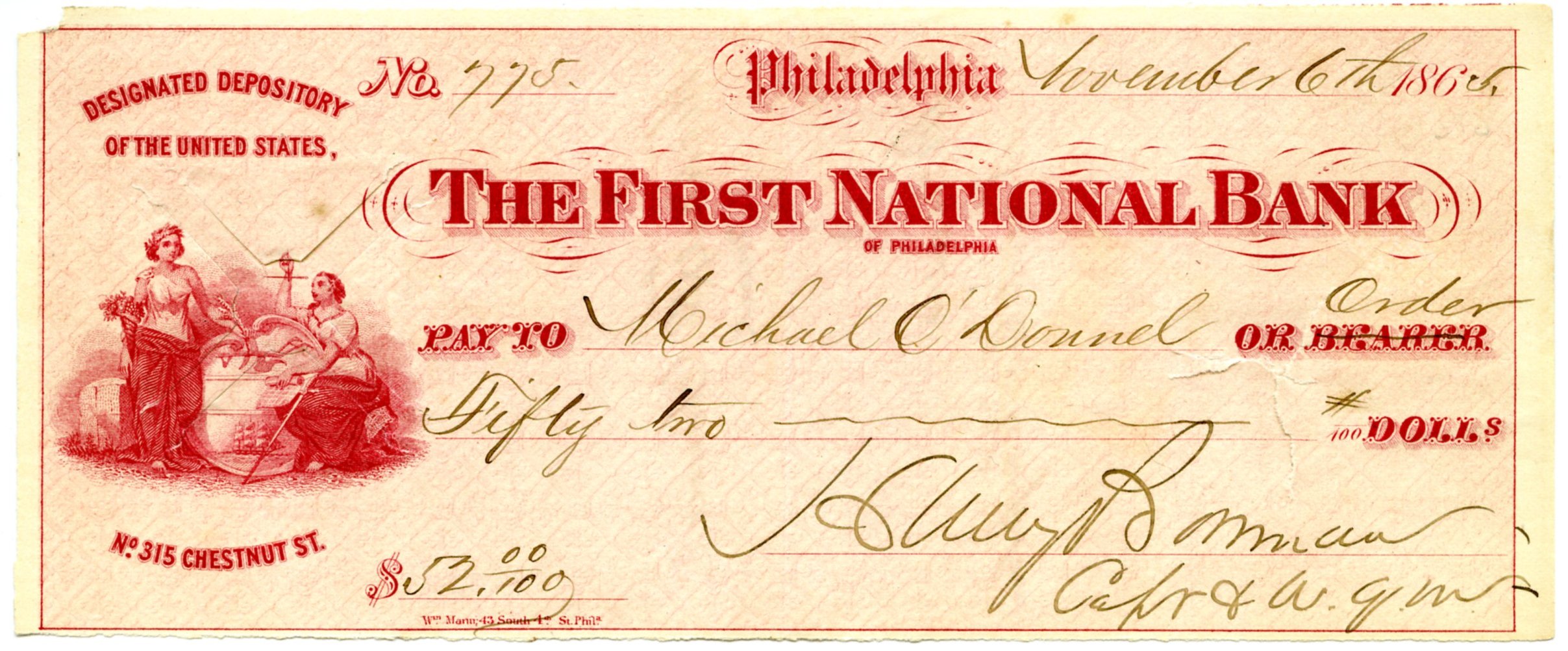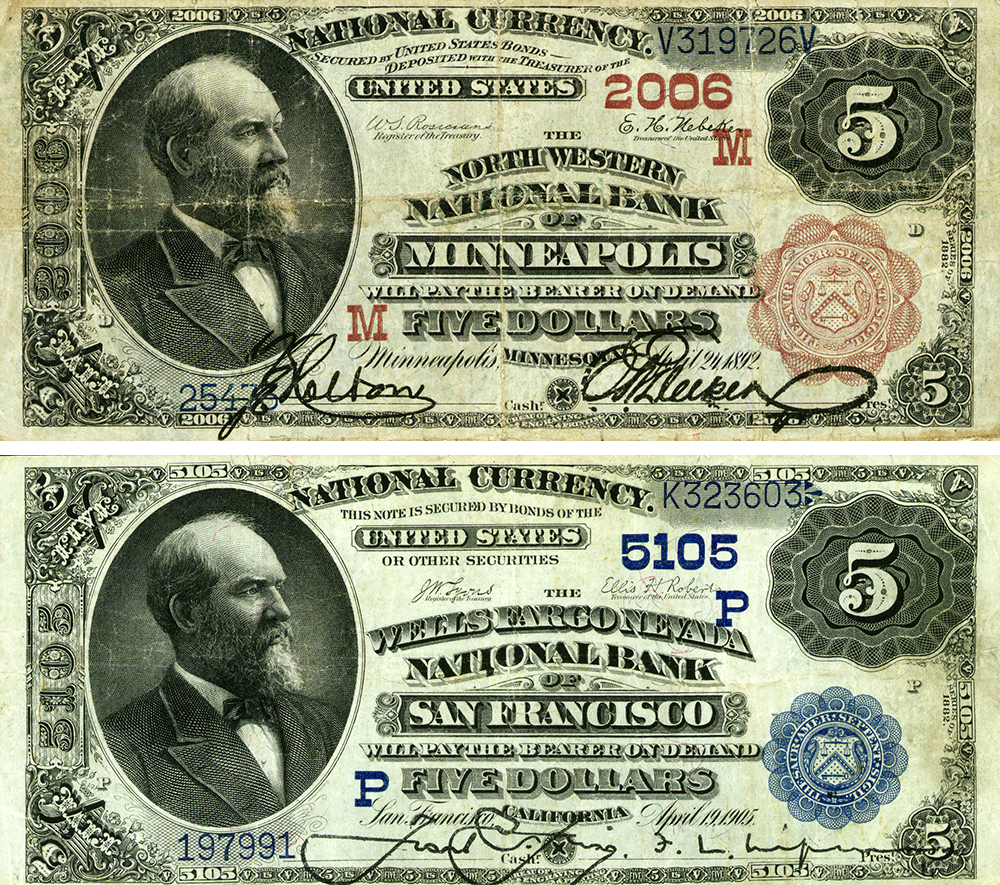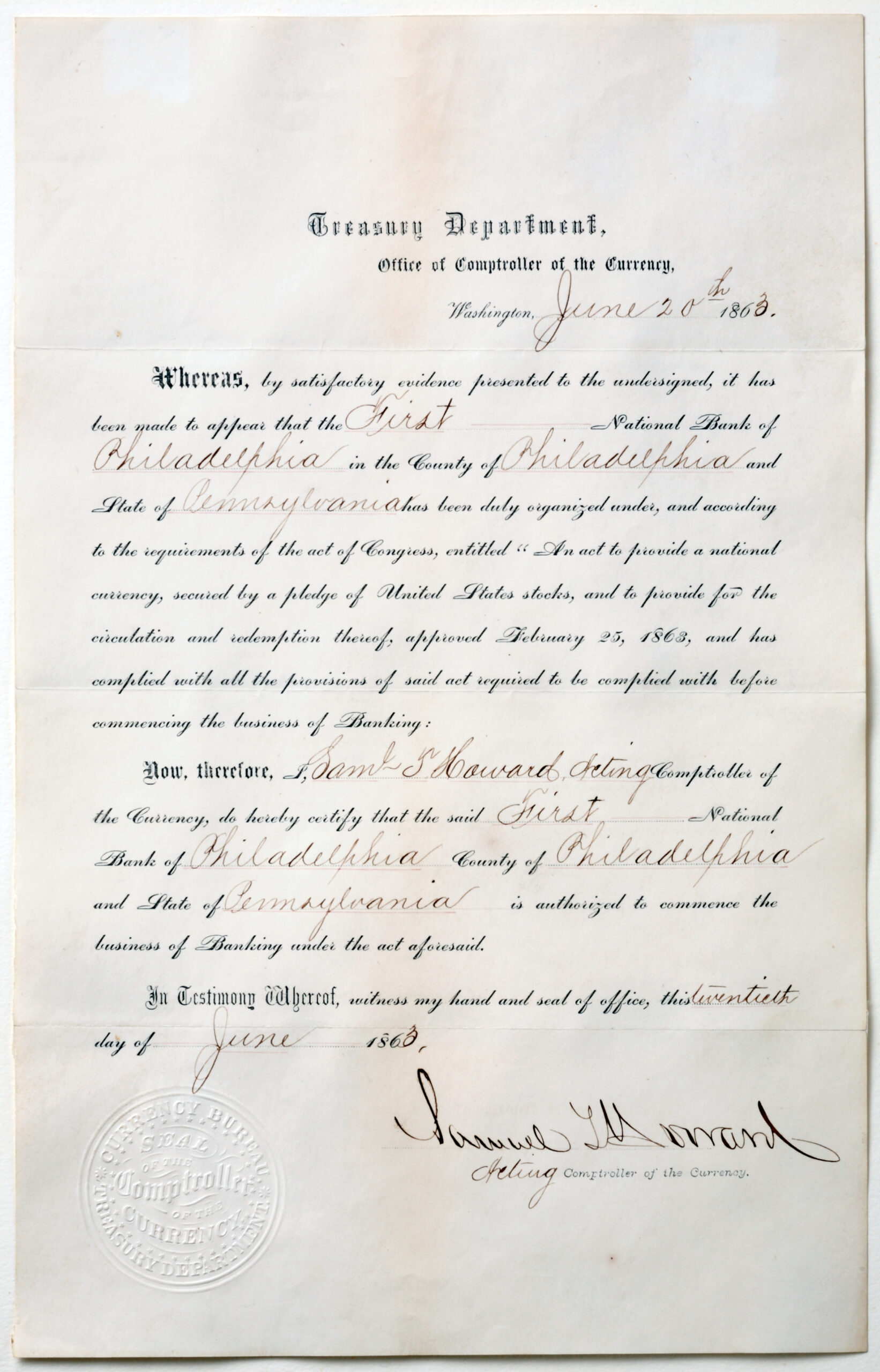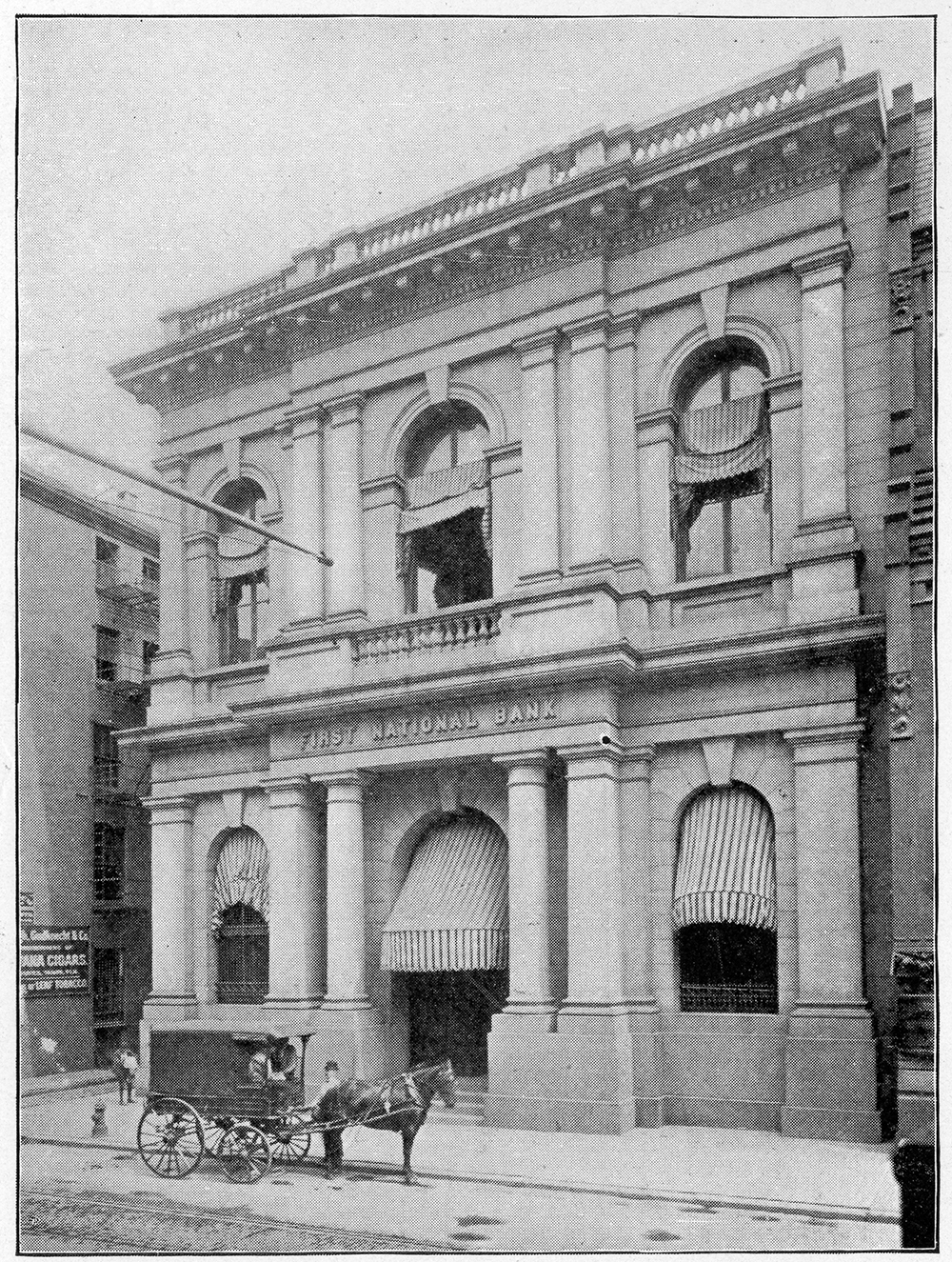Charter Number 1

In the early 1800s, Americans navigated a patchwork financial system. Some banks had authorization, or a charter, from a state government and followed the state’s rules and regulations. Other banks, called private banks, operated outside of state bank systems. Many of these banks issued paper money, called bank notes. This money was not always accepted at its face value. When someone tried to pay with an unfamiliar bank note, the payee had to evaluate if the money came from a stable bank, a risky bank, or even a bank that no longer existed.

During the Civil War, the federal government addressed the chaos caused by unregulated banks and currency. In 1861, Secretary of the Treasury Salmon P. Chase proposed a system of federally chartered national banks. Each bank would have the power to issue bank notes backed by funds invested in federal government bonds. This proposal offered multiple benefits of creating a uniform national currency while providing a ready market for the sale of bonds needed to finance the war. The National Currency Act, later amended as the National Bank Act, laid the foundations for our modern national banking system. It also established the Office of the Comptroller of the Currency to oversee this new banking structure.

On June 20, 1863, the Office of the Comptroller of the Currency issued the very first national bank charter, number 1, to the First National Bank of Philadelphia in Pennsylvania (today Wells Fargo). It opened for business July 11, and started circulating the federal currency as soon as the Treasury Department had it printed and shipped. The honor of the first national bank charter came to the Philadelphia institution in part because its lead organizer was financier Jay Cooke, who had successfully marketed and sold millions of dollars of government bonds. He was also a strong advocate of the banking legislation.


Although it was not the largest bank in Philadelphia, First National proudly embraced the distinction it had by holding national bank charter 1. That status symbolized longevity and stability, characteristics of particular value to bank customers looking for a secure place to put their deposits. Because the Civil War-era legislation limited initial bank charter periods to twenty years and Congress failed to pass an extension bill; First National Bank of Philadelphia had to reorganize itself under charter number 2731 and remained operating under that charter until 1902, when it re-claimed its original charter number 1. The bank proudly touted its unique status on statements of condition, advertisements, stationery, and even through its cable address as “Firstbank.”
Today, Wells Fargo operates under this charter, honoring the legacy of the nation’s first national bank.

